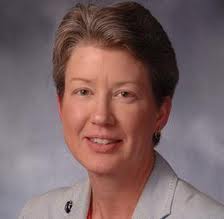On the wall of Tom Flanigan’s, R-Webb City, office conference room, is a six-foot white square. Packed into that graph are a flurry of numbers in 12-point type. Each line of numbers, thousands in the sheet, represents a line item for the department of social services.
Social services and education account for 73 percent of the Missouri budget.

“The thing that gets lost is that its really money,” Flanigan said.
Flanigan is the chairman of the House fiscal review committee and the co-chair of the budget committee, which met Thursday. For the first time in Gov. Jay Nixon’s five-year tenure, the budgets presented by the legislature and governor for 2015 differ in the amount of revenue projected for the state. Nixon’s total budget is $27.7 billion dollars up from $25.7 billion for 2014. The gulf between the governor and legislature is about $310 million. While only a small slice of the pie, it could account for the entire budget of a smaller department.
Why is the revenue estimate so different? Estimating revenue is not an exact science. Staffs of the House Appropriations committee, Senate appropriations committee, and Governor’s Office of Administration all work on revenue projections and communicate with one another. They also enlist the assistance of University of Missouri Economist Joe Haslag who provides information using economic forecasts.
“They do some voodoo, whatever economists do,” Flanigan said.
The Governor’s office believes the climate is more favorable for economic upturn, with about $1 billion more in revenue coming compared to 2014. Budget Director Linda Luebbering reported that revenue from Dec. 2012 to 2013 is up 5.1 percent, about $27 million. For the year – July to December comparing 2012 and 2013 — revenue is up 2.8 percent, about $100 million.

Luebbering added there was a 6.4 percent increase in sales tax and a 12 percent increase in building permits, including a 14 percent increase in single family building permits.
“People are showing more confidence,” Luebbering said. “People are willing to move into bigger homes.”
Flanigan is not worried about the difference. He said that in the old days, 1950s through 70s, each branch of government — House, Senate and Governor — came up with their own budgets that would differ wildly. The legislature and governor would hack away at the difference until May.
At least now the House and Senate are in agreement. One example is Medicaid. Flanigan said there is no way the house is passing Medicaid expansion, which would cut about $1.7 billion from Nixon’s budget.
The legislature is also taking a “better safe than sorry approach.”
“If he’s right, and we have more money, there’s no reason we have to spend it right away,” Flanigan said. “We can bank it for a year.”
Even if both sides are wrong and the economy takes a sudden nose dive, Flanigan harkened back to 2008. The economic collapse threw off the budget set with the previous year’s projection. The state has since bounced back.
“There’s always money flowing through,” Flanigan said, “like a river.”











